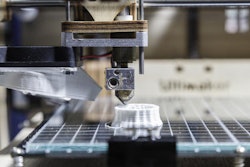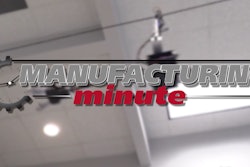The worlds of information technology (IT) and operational technology (OT) are converging and manufacturing professionals in both specializations must understand the significant complexities of building a connected enterprise. The next phase in the digitization of the manufacturing sector, also known as the Fourth Industrial Revolution or “Industry 4.0,” will drive an increase in computational power, connectivity and data volume, all requiring low-power, wide-area networks.
According to The Boston Consulting Group, the race to adopt elements of Industry 4.0 is already underway among companies in Europe, the U.S. and Asia. These changes will be far-reaching, evolving every aspect of manufacturing. To innovate and keep pace in the age of Industry 4.0, manufacturers must proactively address new competitive challenges brought on by convergence.
Before adopting the trends being driven by this latest Industrial Revolution, it’s important to understand exactly how this next era will change the manufacturing floor, even at the most basic level.
A Day in the Life of a Sensor
With the emergence of Industry 4.0, the manufacturing industry will transform production. Once disparate parts of manufacturing systems will become fully integrated and automated for greater efficiency. This changes the manufacturing supply chain as we know it. The number of web-enabled and connected devices is growing exponentially. IDC estimates IoT spend on connected “things” to be $1.7 trillion by 2020, and the manufacturing industry must keep pace.
In Industry 4.0, manufacturing technology professionals are no longer limited to collecting information from single data sources that then need to be digested and compared side-by-side. IT leaders will be able to get the data anywhere, at any time. This leads to benefits, such as improved analytics, diagnostics and interdepartmental collaboration. One way to illustrate this is to look at the granular level of this change — for example how the role of the sensor will transform with the proliferation of IoT in the manufacturing sector:
- Yesterday, a sensor was directly connected to a controller in the manufacturing environment.
- Today, a sensor is now connected to that controller via a network that supports many other IT functions.
- Tomorrow, the sensor will be monitored by multiple applications directly that can feed information to various departments and systems when action is needed.
Within a manufacturing facility, sensors can be used to serve a variety of different, but equally critical functions. Although connectivity provides new opportunities, it also creates new complications in manufacturing environments.
Challenges in Industry 4.0
While Industry 4.0 has many benefits, it is not without challenges. When implemented incorrectly, IoT-enabled manufacturing may have issues with uncontrolled access, network management, software deployment and more. These issues can cause a ripple effect leading to:
- Potential losses in production
- Damage to process or facility equipment
- Loss of data
- Compromised safety for workers in the environment
To overcome these obstacles, it’s important for manufacturers to prioritize, oversee and protect critical elements of their IT infrastructure, often with the data center as the centralized hub. The manufacturing sector should consider the following IT strategies to make the most of Industry 4.0:
- Bring critical data closer to the manufacturing site with edge computing: To gain better oversight and mitigate issues of control and downtime, the manufacturing industry should look to implement edge computing as a key part of its IT strategy. In an on-demand world, lost connections and delays are simply unacceptable. As a result, data centers — the backbone of any business’ IT architecture — are undergoing an evolution.
To support needs today and tomorrow, computing power and storage are being inserted on the network edge in order to reduce data transport time and increase availability. Data centers are being placed closer to action — at the user or data source — and are a part of a larger cloud computing architecture, called “edge computing.”
- Take a layered approach for IoT secure power: Manufacturing teams must also leverage integrated infrastructure solutions to improve speed and simplify deployment, reduce costs and time associated with managing multiple solutions providers and boost uptime of IT systems with standardized solutions.
The key to a successful integration approach is not only compatibility but also protecting the many connections within the layered IT ecosystem. An uninterrupted power supply (UPS) solution can ensure all critical components remain online in the event of outage or downtime. There are three approaches to power protection in IoT-enabled environments, including:
- Power Integrated: Integrated as part of the site’s low-voltage power distribution architecture and often used in conjunction with backup generator coverage; introduced early on during facility construction and engineering design.
- Edge IT Integrated: Provides central UPS protection to networks connecting intelligent devices as well as supports network powered devices (Power over Ethernet or PoE).
- Distributed Protection: Local to the device or equipment to be protected, such as controllers (PLC, BMS) and intelligent devices, and often provided with OEM equipment or procured transitionally.
The first step in developing a power protection strategy for integrated systems is to determine what IT infrastructure components are mission critical and how power is distributed to those appliances. The second step is to look at the intelligent elements of the process and determine if they can be separately provided for from a backed-up power source. This is particularly important as we glean more value from information down to the device level. The best integrated approach looks at how power is or can be delivered to intelligent devices and control systems, as well as the networks supporting them.
Maintaining a competitive advantage requires manufacturers to go beyond the traditional strategies of developing energy-efficient machine designs, reducing design time and lowering manufacturing costs. New technologies and the evolution of human behavior call for machines that continuously adapt to their operating environments.
The Fourth Industrial Revolution is upon us, and when an integrated approach is taken, the manufacturers can simplify infrastructure supply chain, reduce time/cost to deploy, protect critical connections and lessen the overall complexity of manufacturing technology solutions and operations today to stay ahead of the innovations of tomorrow.
Daniel McGinn is Director of Secure Power Systems at Schneider Electric.























